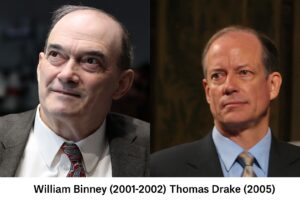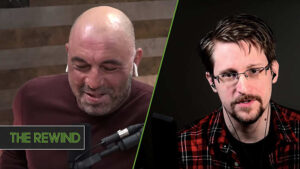Edward Joseph Snowden was born on June 21, 1983, in Elizabeth City, North Carolina, USA. He studied at a community college and later enrolled in a master’s program at the University of Liverpool, which he never completed. In 2005 he worked for the University of Maryland, in 2006 he entered the CIA, in 2009 he moved to Dell where he managed NSA computer systems, and in 2013 he spent two months at Booz Allen Hamilton with the goal of collecting more documents. This path gave him access to different levels of U.S. intelligence systems but never granted him real decision-making authority. At only 29 years old, he was a qualified technician, not a strategist. The public narrative, however, built him up as a lone hero, a rebel who stood against the machine, but the truth is more strategic and calculated than the official story suggests.
In May 2013, Snowden fled to Hong Kong and in June he revealed thousands of documents to journalists such as Glenn Greenwald, Laura Poitras, Barton Gellman, and Ewen MacAskill. The material exposed mass surveillance programs such as PRISM, and operations involving the interception of communications: phone calls, emails, text messages, internet traffic, social networks, and browsing histories, as well as metadata tracking and large-scale behavior pattern analysis. He showed how governments could map in real time the private lives of millions of people. But nothing he disclosed reached the true core of power: technologies of mental manipulation and direct brain control remained invisible.
On June 21, 2013, the U.S. Department of Justice charged him with two violations of the Espionage Act of 1917 and theft of government property, revoking his passport. Since 2016 he has been president of the Freedom of the Press Foundation, a nonprofit organization in San Francisco that supports journalists against surveillance and hacking. He married Lindsay Mills in 2017 and in 2019 published his memoir Permanent Record. After 2013, his life entered permanent exile.

Before him, figures like William Binney (2001–2002), Thomas Drake (2005), and several journalists had already denounced surveillance abuses, though without irrefutable documentary proof. Snowden invented nothing; he merely officially stamped what others had already suspected. What he showed confirmed old suspicions and exposed visible surveillance systems, but left intact the mechanisms that really matter, ensuring that the core of power remained invisible and untouchable.
The Lack of Truth

In 2013, Snowden managed to extract thousands of documents, emails, and internal reports, organized in discreet devices, without being detected by any super-agency. The massive amount of data exposed defies any internal logic and breaks the official narrative of infallible surveillance.
Despite all the media attention, the scope of what Snowden revealed was carefully limited. He showed only what was visible and relatively obsolete for intelligence organizations, leaving intact the technologies of mental manipulation and direct brain control, such as V2K (Voice to Skull) and RNM (Remote Neural Monitoring) (Link). The gap between public exposure and real power is abysmal.
Cinema had already anticipated part of what Snowden made public. Enemy of the State (1998) showed the absolute power of intelligence agencies to monitor lives, invade communications, and manipulate information. Snowden merely made official to the general public what was already obvious to those who observed the system closely, but without touching on the elements that truly threaten power.
The leaks were selective, strategically chosen: only obsolete systems, with no real risk to the elite. The narrative of the lone hero was born from there, built to mask the smoke screen. While everyone celebrated Snowden’s courage, the most advanced control mechanisms remained invisible, silently laughing behind the curtains of power.
The Game of the System
What Snowden made public was not an accident or a pure act of rebellion. The revelations served as a strategic distraction: obsolete and relatively harmless digital surveillance systems were exposed, while superior control technologies remained invisible. Each document released functioned as a smoke screen, diverting public attention from the true power operating behind the scenes.
Global intelligence organizations possess a reach that goes far beyond monitoring emails, calls, and social networks. Advanced technologies, capable of interacting with the human mind in real time, continue to operate without any exposure. Snowden never touched this level; the elite protected what truly matters, maintaining control over the invisible mechanisms that shape perceptions, decisions, and behaviors.
Entertainment, television, and cinema also play a strategic role in this game. Films like Enemy of the State and episodes of The Simpsons serve as subliminal preparation: they normalize the idea of absolute surveillance and familiarize the public with the feeling of being constantly observed. Thus, when the digital leaks appear, the public is already conditioned to accept them, without questioning what remains hidden.
The result is a system that smiles from behind the curtain. While everyone debates cables, servers, smartphones, computers, phone calls, emails, messages, and social networks — everything Snowden exposed — the true power operates invisible, silent, and absolute, manipulating systems no leak ever touched.
The Subliminal Reference in The Simpsons Movie (2007)

Now I want to show a concrete scene from The Simpsons Movie (2007). Minute 57:10: a train crosses a winter landscape, with snow covering the trees and the outside visible through the windows. Inside were Bart Simpson, Lisa Simpson, Marge Simpson, and Maggie Simpson. Homer was not present. Marge says in a conversation: “Oh, Lisa, it’s not like the government is listening to everybody’s conversation.”

This is not a coincidence or an innocent joke. Each element — the snowy landscape, the term snow, the phrase about surveillance — works as subliminal coding. The snow works as a subliminal reference to the name Snowden, symbolically linking the scene to invisible surveillance and total control.
The film anticipates total surveillance: invisible systems can listen to everything, even in private spaces, without the population noticing. This scene is a clear example of how Hollywood prepares the public. Small details in films and series normalize mass surveillance and condition collective perception: while everyone discusses digital systems, communications, metadata, and networks, the true power over human minds remains invisible, absolute, and unreachable.
Subliminals like this are not innocent; they are mental training and a subtle warning of what the elite can do without anyone noticing, reinforcing the same smoke screen pattern that Snowden helped maintain. And the timing confirmed the pattern: six years later, from 2007 to 2013, the film was right.
Conclusion: The Real Threat

Snowden was not a hero. Everything he revealed was authorized and carefully selected, limited to information that no longer had strategic value. While everyone focuses on documents, phone communications, emails, messages, and exposed metadata, real control over the human mind remains invisible and absolute, operating without any supervision or public perception. High-ranking intelligence agents and the elite behind them laughed at the case, but in public pretended indignation and outrage. The elite protected its most valuable secret and, at the same time, gained a media martyr who distracts the people from what really matters. The real threat is not in the digital surveillance Snowden showed, but in the invisible engineering of the human brain, through technologies like V2K (Voice to Skull) and RNM (Remote Neural Monitoring), capable of shaping perceptions, decisions, and behaviors without anyone realizing it. Ultimately, while everyone debates what was exposed, the true power remains untouched, silent, and absolute, reinforcing the smoke screen that keeps the elite in control.
Today, Snowden lives in Russia, with permanent residency since 2020 and citizenship granted by Putin in 2022. He is not a fugitive nor a persecuted man, but a Kremlin trophy, kept as a useful piece in a calculated geopolitical game. While the West sells him as a lone martyr, the reality is that he continues to serve on the power board he pretends to fight.

Snowden will never have an answer to this text — and no one will dare to contest it. Not even Joe Rogan himself would have the courage to touch this level.
August 2025
This article is in English. Read the Portuguese version ⇒ Ler em português
